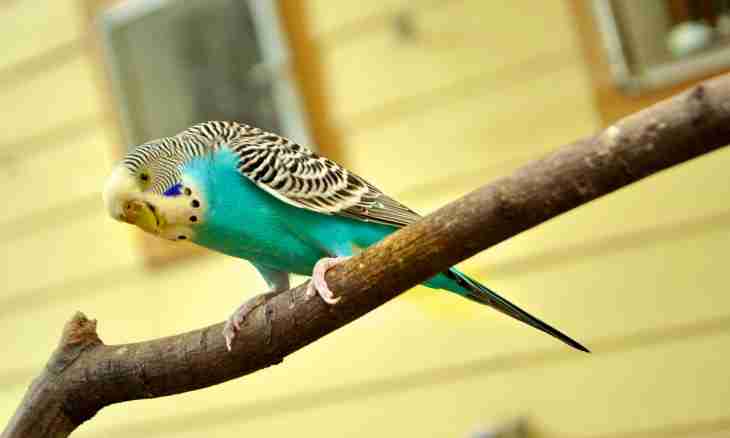Domestication of a budgerigar to hands – one of the major stages in its training; only the tame parrot can learn to speak. Cordial, trusting relationship of the person with a bird is allowed to improve communication and provide mutual understanding. If you want to tame a budgerigar, be ready to spend a lot of time and patience for this process, it is necessary to accustom a parrot to hands gradually, without forcing an event.
- You for certain well know habits and tastes of the birdie therefore without effort you will understand what type of a forage is pleasant to a parrot most of all. It can be the roll wetted in milk, a grass, any kind of sunflower seeds. Take a small amount of the delicacy loved by a parrot in a hand and stretch it to a bird. Certainly, not each parrot will at once take from a hand of sterns. You keep a hand in a cage with a parrot within 5-7 minutes, and the bird will understand sooner or later that the forage can be taken safely from a hand. It is the best of all to carry out such "procedure" in the evening – at this time parrots are especially quiet and weakened.
- Try not to force events: you do not move with fingers and do not try to take a parrot in a hand when he approaches you. Handle with a bird most with care and softly, trying not to frighten her. Until the parrot is tamed, try not to let out him from a cage, and do not abuse a bird if she is afraid of something or does not understand: parrots well feel any intonations in a voice, and instantly react to them. To tame a budgerigar, it is necessary to talk to him quietly and to do only smooth movements.
- Usually in a month after the beginning of domestication the budgerigars begin to sit down on the owner's hand, and it means that it is possible to begin to let out a bird from a cage. At this stage of domestication the curious parrots gradually begin to develop the surrounding territory independently. The main thing – do not forget to leave a cage open when the parrot travels around the apartment that the bird could always return to "house" freely. Also you watch that all objects and pets capable to become a source of troubles for a parrot were isolated for the period of his "walks".
- If the parrot avoids you and does not seek to take food from hands, try not to feed him within 5-6 hours (all this time at a cage surely there has to be a drinking bowl with water). Sooner or later the bird will get hungry, and will be forced to offer care for the sake of receiving a forage. And over time the bird will get used to you, and her fear will gradually disappear.

